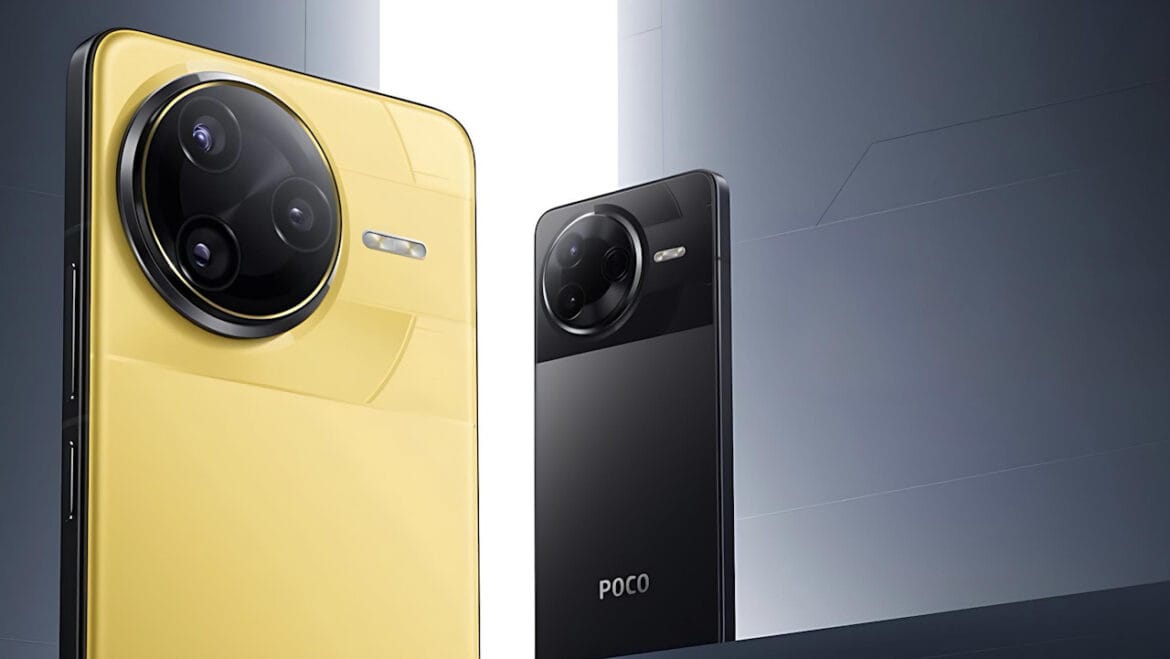POCO has always flirted with the big leagues, but this time, they’re making a play to move up a division.
With the new F7 Ultra and F7 Pro, the brand’s latest launch isn’t trying to cruise in the flagship slipstream—it’s making a statement. No more teasing ‘flagship features at mid-range prices’; POCO wants flagship clout now, and it’s not shy about who it’s chasing: the de facto pack leader, Samsung.
Even the name ‘Ultra’ is so on the nose. But does its performance match the ambition?
A new ‘Ultra’ on the block
 For the first time, POCO is jousting in the flagship arena with something that feels legitimately premium and not just aggressively priced—there are some slight compromises, though. The F7 Ultra is powered by the same Snapdragon 8 Elite chip found in Samsung’s 2025 flagships, and paired with POCO’s new VisionBoost D7 graphics chip.
For the first time, POCO is jousting in the flagship arena with something that feels legitimately premium and not just aggressively priced—there are some slight compromises, though. The F7 Ultra is powered by the same Snapdragon 8 Elite chip found in Samsung’s 2025 flagships, and paired with POCO’s new VisionBoost D7 graphics chip.
VisionBoost D7 is POCO’s first dedicated graphics chipset, and it works alongside the Snapdragon’s Adreno GPU. It upscales images to 2K resolution, boosts frame rates to 120 FPS, and optimises HDR for better contrast and colour. Because it does these enhancements ‘after the fact,’ it works for all games—you don’t have to wait for the game developer to enable support for these features. It’s designed to work with video playback on platforms like YouTube and Netflix, enabling sharper, more vibrant visuals, even if the internet connection is sub-optimal.
On top of that, you get a 6.67″ 2K AMOLED display with a peak brightness of 3200 nits (brighter than Samsung’s), IP68 protection, and an ultrasonic fingerprint sensor. It even has top-tier features like 120W wired and 50W wireless charging, a 5,300mAh battery, and IP68 resistance from the elements.
The F7 Ultra also features POCO’s strongest camera setup—a primary camera with a Light Fusion 800 50MP sensor, a floating telephoto lens 50MP camera with 2.5X optical zoom, and a fixed-focus 32MP ultra-wide shooter and front camera. These specs fall short of the incumbent flagship phones and reflect a compromise similar to ASUS’s flagship ROG Phone 9 Pro, which prioritised gaming performance over a class-leading camera.
The closest Samsung rival? The 6.7″ S25+. Cameras-wise, it has the POCO beat on paper; the 200MP primary camera, 3- and 5x optical zooms, and all-autofocus secondary cameras cater to those with uncompromising photography needs. On the other hand, it compromises some departments, such as charging speed—only 45W wired and 15W wireless—and a smaller 4,900mAh battery; this is something the Chinese phones seem to have down as an art. The display also has less peak brightness—2,600 nits vs 3,200 nits—but it’s relatively minor.
The F7 Ultra looks to give you most of that flagship experience, and the price starts at SGD 869. Samsung’s equivalent? Try a starting price of SGD 1,528. That’s a gap wide enough to make any nitpicking feel like self-projection.
The mid-priced ‘pro’
 The F7 Pro also holds its own in the midrange category, squaring off against the S24 FE—which might be punching down as it’s from the previous generation. Display-wise, both phones sport 6.7-inch panels with a 120Hz refresh rate, but POCO ups the ante with a higher resolution (2K vs FHD+) and 3200 nits of brightness versus 1900 nits on the S24 FE.
The F7 Pro also holds its own in the midrange category, squaring off against the S24 FE—which might be punching down as it’s from the previous generation. Display-wise, both phones sport 6.7-inch panels with a 120Hz refresh rate, but POCO ups the ante with a higher resolution (2K vs FHD+) and 3200 nits of brightness versus 1900 nits on the S24 FE.
Performance-wise, POCO’s rocking the Snapdragon 8 Gen 3, while the S24 FE (for Singapore) uses Samsung’s in-house Exynos 2400e. Qualcomm often shades it when it comes to these comparisons, but you don’t usually feel it in most situations unless you’re into benchmarking as a hobby.
POCO offers 12GB RAM and up to 512GB of storage. Samsung caps out at 8GB RAM and 256GB storage. Battery-wise, POCO has a runaway lead: 6,000mAh battery + 90W charging vs 4,700mAh battery + 25W charging.
POCO also gets 4 years of Android updates and five years of security updates, which is far from the seven-year offerings from the leaders. However, I’m unsure if your phone or, more importantly, your battery can last seven years.
And then we come to the price: SGD 669 (12GB + 256GB) vs SGD 1,028. A Snapdragon 8 for under SGD 700? It may not be a big deal if you are open to grey imports, but this is pretty much your only option through official channels.
Final thoughts
Samsung getting picked on is the ultimate compliment. It’s the Android benchmark every challenger wants to beat. Its long-standing presence, strong resale value, brand loyalty, and polished user experience make it arguably more ‘Android’ than Google’s own Pixel phone.
On paper, POCO F7 Ultra and F7 Pro are classic spec-sheet disruptors—offering more power, bigger batteries, and faster charging for a fair bit less. However, spec-for-spec battles only tell part of the story. The real test lies in long-term use, and that burden of proof still falls squarely on POCO.
That said, it’s hard to call it a gamble at these prices. The F7 Series reminds us what Chinese brands have done well for years: performance without the premium. And with this one-two combo, POCO’s not just punching above its weight—it might land some clean shots.
*A terribad Hokkien pun for ‘boh koh leng’, which means impossible. I’m sorry, and you’re welcome.
